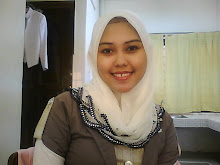JOURNALS REVIEW
Journal 1 : Action research as a bridge between pre-service teacher education and in-service professional development for
students and teacher educators
Author : Kari Smith and Orly Sela
Year : 2005
Journal 2 : Action research, pedagogy and change: the transformative potential of action research in pre-service teacher education
Author : Jeremy N. Price
Year : 2001
Journal 3 : Action Research and Distributed Problem-Based Learning in Continuing Professional Education
Author : David McConnell
Year : 2002
FOCUS OF STUDY
Journal 1: To improve course of Teacher as Researcher.
Journal 2: Action research study of an action research course.
Journal 3 : Collaborative work and learning experiences of students involved in distributed problem-based learning (dPBL)
Similarity
Journal 1 and 2 are focus on the improvement of the course content.
SAMPLE
Journal 1 : Student teachers of fourth and final year of teacher education.
Journal 2 : Pre-service teachers
Journal 3 : Students from the United Kingdom,
Eire, mainland Europe, South Africa, Hong Kong, Singapore, Japan and Australia
Similarity
Journal 1 and 2 involve pre-service teachers.
SETTING
Journal 1: Final year student
Journal 2 : Teacher candidate, spring
Journal 3 : Area of United Stated
PROCEDURE
Journal 1
• summary of the reflective journal;
statement of the problem;
learning about the problem (both from the literature and from the field);
plan of action;
documentation of implementation;
discussion.
Journal 2
Developing a question or research focus
Developing a research design
Analyzing
Synthesizing
Interpretations of data.
Journal 3
Examination of the work of a dPBL group as it occurred online
Analysis of transcripts of the discussions, debates, activities and shared production.
Similarity
The procedure of the action research of journal 1 and 2 quite same.
DATA COLLECTION
Journal 1
Documentation of staff meetings
Personal diaries
Formal feedback elicited by a 17 item open questionnaire
Journal 2
Transcripts of audiotapes of classroom conversations
Questionnaires conducted at the beginning and end of the course
Action-research journals; the pre-service teachers’ and the students’ writing
(Journals, assignments, e-mail
Correspondence, etc.)
Informal interviews with teacher candidates
Videotapes of classroom work
Documents such as school, district and state policies.
Journal 3
Observation,
Ethnography,
Textual analysis
In-depth interviews
Similarity
All journals are used questionnaires and observation in their data collection.
Know me..

- eZza
- 'SEKALI MENDIDIK, SELAMANYA MENDIDIK' Action research is simply a form of self-reflective enquiry undertaken by participants in social situations in order to improve the rationality and justice of their own practices, their understanding of these practices, and the situations in which the practices are carried out (Carr and Kemmis 1986: 162).
Tuesday, May 26, 2009
Journals Review of Action Research
Posted by eZza at 8:07 PM
Subscribe to:
Post Comments (Atom)


0 comments:
Post a Comment